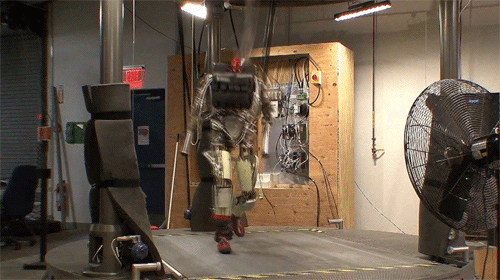Among other things, Matt Novak’s Paleofuture dispatch from the DARPA Robotics Challenge explains why technology associated with the agency–the Internet, driverless cars–usually pans out even if it initially seems outré. That something to consider since it has more than a passing interest in robotic warfare. An excerpt:
If DARPA has an interest in any particular technology, there’s a reasonable chance that it’ll be a practical reality within your lifetime. DARPA specializes in “high risk, high reward” research and development, which means that it’s pushing the limits of what’s possible. But DARPA isn’t interested in dicking around with impractical nonsense. Or anything that doesn’t have applications that contribute to national defense. “Here at DARPA we don’t do science for science’s sake,” Steven Walker, deputy director of DARPA, says in a video at the expo. Walker goes on to explain that one of the reasons DARPA was created was to create “technological surprise.”
The agency was founded in 1958 (then known as ARPA) on the heels of the Soviet Union’s successful launch of Sputnik, the first artificial satellite, into orbit. It was a national embarrassment for the United States — especially the Cold Warriors who insisted that American style capitalism would produce the best goods, services, and technologies. So the Eisenhower administration decided that it wouldn’t be surprised again.
Just one of many technologies developed by DARPA is the driverless car. Americans have been waiting on the fully automated driverless car for decades. In fact, scifi visions of the driverless car are nearly as old as the automobile itself. And with each passing day, we inch closer and closer to driverless cars becoming a mainstream reality on America’s roads.
Today we associate companies like Google with driverless car development. But DARPA has been working on driverless cars since before Google even existed.•

